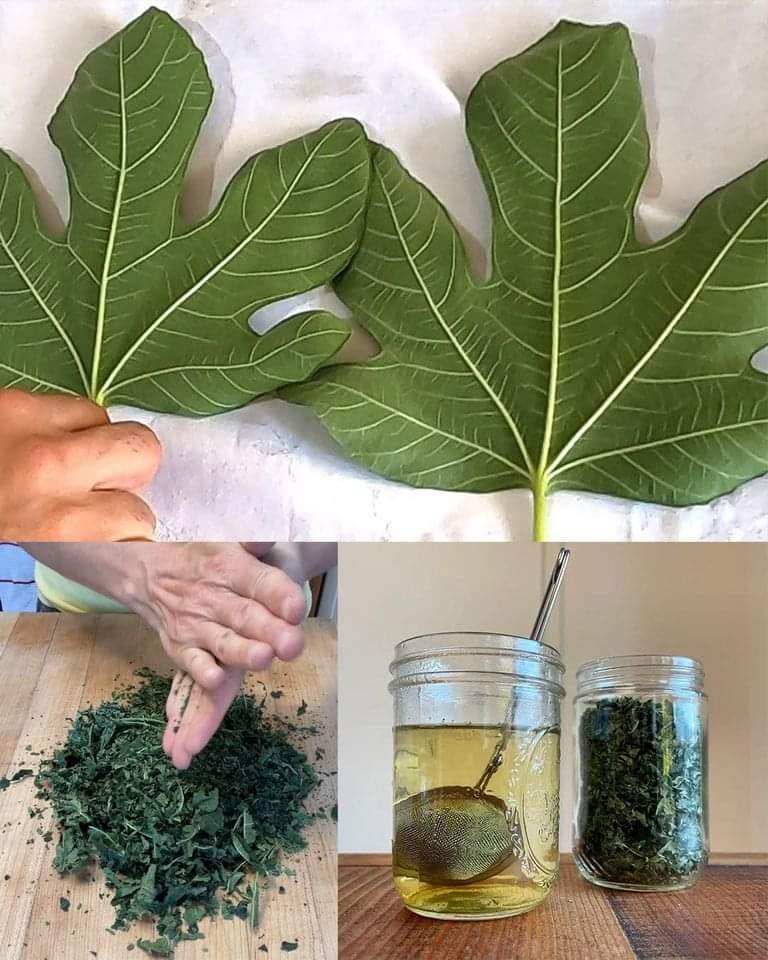Using Fig Leaves Power Treatment for Diabetes and Other Conditions Many civilizations have long utilised fig leaves as an all-natural treatment for diabetes and other illnesses. Fig leaves provides health benefits.
The common fig leaf is a useful tool that is sometimes disregarded in the search for natural health remedies. The leaves of the fig tree provide a variety of therapeutic qualities that are especially helpful for people with diabetes, even though the fig fruit is well known for its tasty flavour and nutritious advantages.
Health Benefits of Fig Leaves:
- Diabetes Management: Consuming fig leaf extract may assist people with type 2 diabetes lower their blood sugar levels, according to certain research. Flavonoids, polyphenols, and soluble fibre are among the substances found in fig leaves that may help explain their hypoglycemic properties. These substances may lessen insulin resistance and increase insulin sensitivity, which would enhance blood glucose regulation.
- Antioxidant Properties: The body uses flavonoids and phenolic chemicals, which are abundant in fig leaves, to counteract damaging free radicals. Antioxidants are essential for lowering inflammation and oxidative stress, two factors that are connected to a number of chronic illnesses, such as cancer, diabetes, and cardiovascular disease.
- Anti-Inflammatory Effects: According to some research, fig leaves may have anti-inflammatory qualities that can help treat diseases like inflammatory bowel disease, asthma, and arthritis. Fig leaves include compounds called ficusin and bergapten, which have been investigated for possible anti-inflammatory properties.
- Digestive Health: Dietary fibre, which is found in fig leaves, can help with digestive health by controlling bowel motions, avoiding constipation, and fostering the development of good gut flora. Furthermore, fig leaves may have modest laxative qualities that may relieve occasional constipation.
- Regulation of Cholesterol: According to preliminary research, fig leaf extract may lower cholesterol and thereby lower the risk of heart disease. Fig leaves have the potential to support healthy cholesterol levels by regulating lipid metabolism and preventing the intestines from absorbing cholesterol.
Making Fig Leaf Tea A Straightforward Recipe
Making fig leaf tea is one of the easiest and most productive methods to use fig leaves. This can be appreciated for its health advantages alone, or it can be a great addition to a diabetes treatment regimen. Here’s how to get ready for it:
Ingredients For the Recipe:
- Water
- Fig leaves (fresh or dried)
Instructions For the Recipe:
- If the fig leaves are fresh, start by cutting them into smaller pieces. Should you be utilising dehydrated leaves, they might already be in an appropriate state for infusion.
- For every cup of tea, measure out approximately one teaspoon of chopped fig leaves.
- Place the fig leaves in a pot of boiling water. Give them a good fifteen minutes to simmer. This procedure aids in removing the advantageous substances from the leaves.
- Once the tea has simmered, drain it to get rid of the leaf fragments.
- Warm tea should be served. It is advised to consume one to two cups each day to help control blood sugar.
This tea is a delightful beverage to sip at any time of day because it not only lowers blood sugar levels but also has a calming impact on the body.
Security and Suggestions:
- Although fig leaves are typically safe to eat, it’s crucial that people with diabetes who are currently on medication or insulin therapy speak with their doctor before adding fig leaf tea to their regimen. This guarantees the balance and efficacy of their entire treatment strategy.
- Fig leaves are more than just a component of the delicious fruit-bearing tree. They are a veritable powerhouse of health benefits, especially for diabetics. A more natural approach to health and wellness can be adopted by include fig leaf tea in your diet. Fig leaves present a viable and adaptable solution, whether your goal is to control your blood sugar levels or just learn more about the advantages of natural therapies.
